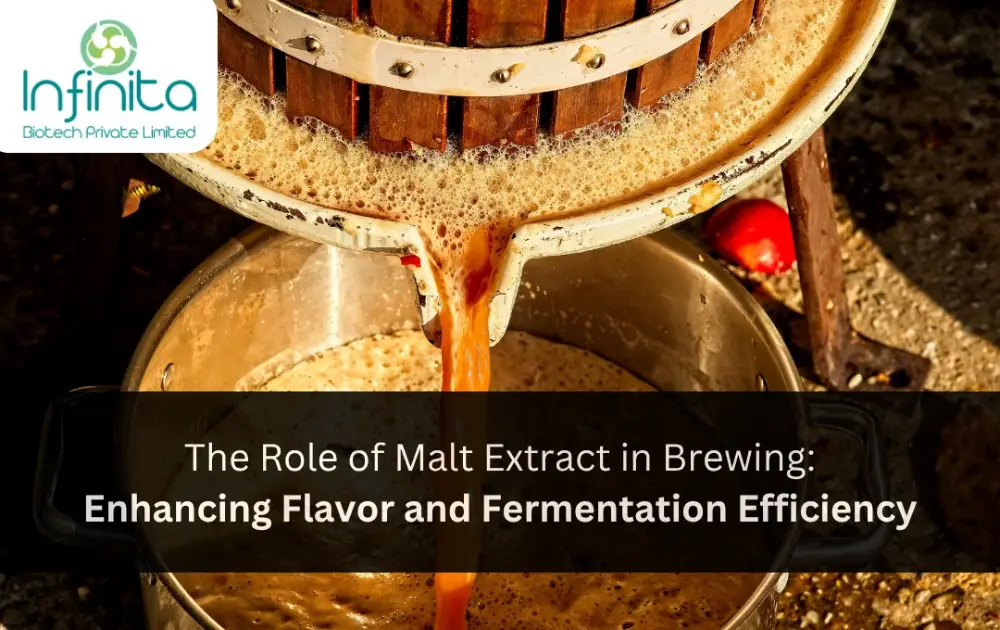Brewing is a fine balance of science and creativity. Behind every distinctive beer lies a combination of ingredients that define its taste, aroma, and consistency. Among these, malt extract stands out as a key driver of flavor development and fermentation performance. Whether in small-scale craft breweries or industrial operations, malt extract offers versatility and efficiency that are hard to match.
What Is Malt Extract?
Malt extract is a concentrated product derived from malted grains, typically barley. The process involves soaking the grains to encourage germination, followed by drying and milling. Enzymes activated during germination convert starches into fermentable sugars, resulting in a sweet, nutrient-rich liquid known as wort. When this wort is condensed, it forms either as a liquid malt extract (LME) or dry malt extract (DME).
LME has a syrup-like consistency with some residual moisture, while DME is a powdered version with a longer shelf life. Both are rich in carbohydrates, proteins, vitamins, and minerals that support yeast activity and flavor development during brewing.
Flavor Enhancement with Malt Extract
One of the biggest reasons brewers use malt extract is for the depth it adds to a beer’s flavor profile. The sugar and amino acid content contribute to caramelization during boiling, creating subtle notes of toffee, biscuit, or roasted malt depending on the source and concentration.
Different types of malt extracts bring different taste elements:
- Light malt extract imparts a clean, mild sweetness suitable for lagers and pale ales.
- Amber or dark malt extract adds more body and color, ideal for porters, stouts, and bocks.
By offering control over both color and taste, it helps brewers fine-tune their recipes and maintain consistency across batches.
Fermentation Efficiency: A Key Benefit
Efficiency is critical in brewing, especially when scaling production. Malt extract plays a central role in supporting fermentation by providing:
- Fermentable sugars like glucose and maltose, which yeast readily consume
- Amino acids and micronutrients, essential for robust yeast metabolism
- Stable specific gravity, making it easier to predict alcohol content
These qualities ensure that fermentation proceeds smoothly, with fewer chances of stuck or sluggish batches. Brewers can achieve faster start times, reliable attenuation, and better control over alcohol levels.
Advantages for Brewers
Beyond flavor and fermentation, using malt extract offers multiple practical benefits:
- Time-saving: It eliminates the need for mashing and lautering, reducing brew day duration.
- Consistent quality: Commercially produced extracts undergo strict quality control, ensuring uniform composition.
- Space efficiency: Ideal for small-scale or pilot brewing setups where full grain equipment may not be available.
- Recipe flexibility: Brewers can adjust gravity or supplement all-grain recipes with malt extract as needed.
These benefits make it especially valuable for homebrewers, R&D teams, and breweries looking to optimize processes without compromising on product quality.
Broader Applications of Malt Extract
Though best known for its role in beer, malt extract is also widely used in:
- Distilleries, particularly in whiskey production
- Bakery products, where it adds sweetness and color
- Nutritional supplements, as a natural energy source
- Non-alcoholic malt beverages, popular in health-focused markets
Its clean-label appeal and natural origin align well with modern consumer preferences for transparency and sustainability.
Conclusion
In today’s brewing landscape, where flavor precision and process control are crucial, malt extract proves to be an invaluable ingredient. It enhances sensory appeal, supports consistent fermentation, and simplifies production workflows — all while offering natural, clean-label functionality. Whether you’re crafting a traditional ale or experimenting with a new brew, incorporating malt extract can elevate both taste and efficiency.







